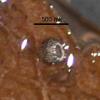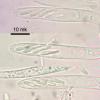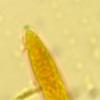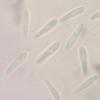
08-01-2026 21:22
 Blasco Rafael
Blasco Rafael
Hola, He recogido esta muestra de Orbilia sobre Re

07-01-2026 10:24
 Danny Newman
Danny Newman
Pezicula sp. on indet. hardwood Appalachian Highl

07-01-2026 22:22
 Danny Newman
Danny Newman
Tatraea sp. on indet. hardwood The Swag, Great Sm

07-01-2026 17:29
 Marc Detollenaere
Marc Detollenaere
Dear Forum,On a barkless Populus I found some smal

10-11-2021 17:33
 Riet van Oosten
Riet van Oosten
Add-on topic http://www.ascofrance.com/forum/7059

07-01-2026 10:05
 Danny Newman
Danny Newman
cf. Chaetospermum on XylariaCosby Campground, Grea

02-01-2026 17:43
MARICEL PATINOHi there, although I couldn't see the fruitbody, I

04-01-2026 17:45
 Stephen Martin Mifsud
Stephen Martin Mifsud
I was happy to find these orange asmocyetes which
It is my first collection of this beautiful genus. I am not sure yet about species exactly, perhaps Venturiocistella uliginosa (following the key by Raitviir, 2004). A single apothecium was found on a leaf of Betula nana (it was loosely attached and ?perhaps originally belongs to Vaccinium uliginosum, the litter in that location contains leaves of this plant too).
Ombrotrophic bog. Coordinates: N60,890502° E68,682159°. Date of collection: 26.06.2014.
Apothecia cupulate, short-stipitate, 370 mk across, whitish with brown seta, hymenium grayish; one single apothecium collected on upper side of the leaf.
Excipulum from textura prismatica, cells about 15 x 7 mk in upper part; hairs brown at base, lighter at the edge, up to 40 mk long, 5 mk broad, granulate; seta up to 200 mk long at base, shorter in upper part, 6 mk broad at base; asci with weak crozier, with euamyloid pore, 50-57 x 6-7.7 mk; paraphyses filiform, not abundant, about 1.5 mk broad; spores fusoid, heteropolar, 11 (9-15) x 2 (1.8-2.6) mk (n=18).

I think it is V. venturiodes. But I do not know V. uliginosa, but I see from the protologue that it has much shorter setae. Also it is said to be without croziers (not figured). Your spores are longer indeed, but maybe varoation? Here is my key:
1. Apical ring of dead asci 2-3 times broader than thick, strongly hemiamyloid, surface of lateral ascus wall and/or ascogenous hyphae faintly but distinctly hemiamyloid, ascospores with +/- attenuated ends, corticolous 2
1. Apical ring of dead asci not broader than thick (Calycina-type), euamyloid or nearly inamyloid, ascus wall and ascogenous hyphae inamyloid (hemiamyloid in V. diversipila), ascospores with +/- obtuse ends, foliicolous 3
2. Ascospores *14-24 x 1.7-2.2(-2.5) µm, slightly to medium sickle-shaped (especially at apex), sometimes helicoid, with a number of medium-sized and small LBs in each half, on bark of Ulex, Great Britain V. ulicicola
2. Ascospores *10.5-14 x 1.8-2.5 µm, straight, with some +/- small LBs in each half, on resin, bark (and cones) of Pinus, Central Europe V. pini
3. Setae max. 100(-120) µm long, spores *8-17 x 2-3 µm, asci arising from simple septa (?also croziers) 4
3. Setae often 100-200(-260) µm long, spores *5-11 x 1.5-2.4 µm, asci arising from croziers 5
4. Spores †12-17.5 x 2-3 µm, asci †32-60 x 6-8.7 µm, arising from simple septa, on leaves (and twigs) of Vaccinium uliginosum, Europe, Asia V. uliginosa
4. Spores †8-13 x 1,8-2,1 µm, asci †26-33 x 6-8 µm, ?arising from simple septa, on leaves of Gaylussacia, N-America
V. gaylussaciae
7. Asci †17-23 x 4.3-6 µ, apical ring very faintly ?blue in IKI, whole ascus wall faintly hemiamyloid (after KOH distinctly IKI-blue), setae c. 9-40 per apothecium, only inserted on flanks, basally lageniform, wall 0.5-1(-1.5) µm thick, light hairs only at margin, on leaves of Betula, Quercus, Populus, in autumn, Central Europe V. diversipila
7. Asci †26-46 x 4.3-6 µm, apical ring rather stongly blue in IKI, ascus wall IKI-, setae c. 80-120 per apothecium, hardly swollen near base, wall 1-3 µm thick, setae and light hairs occurring mixed on whole exterior, on leaves of Vaccinium uliginosum in early summer, Northern Europe V. venturioides









